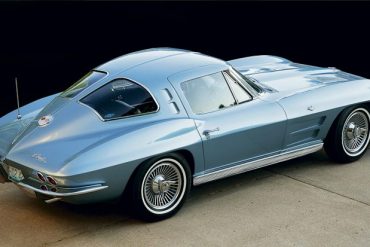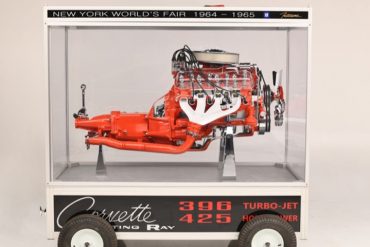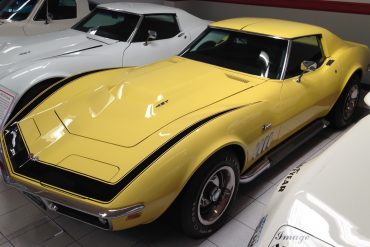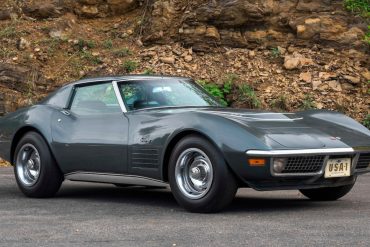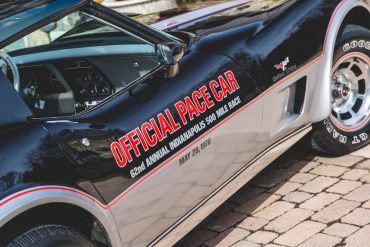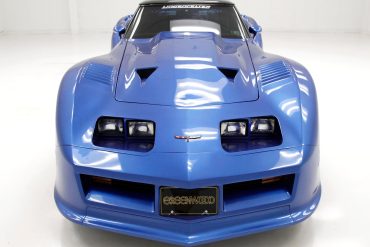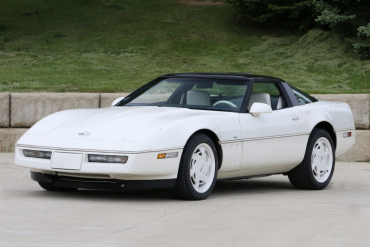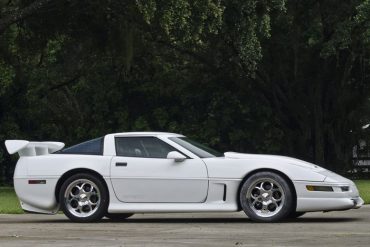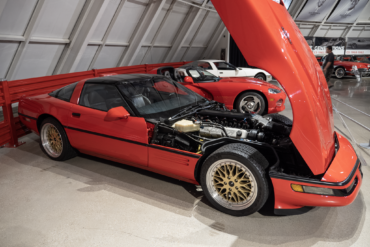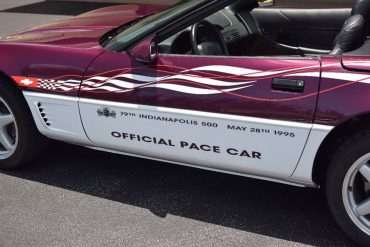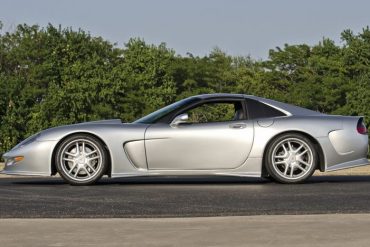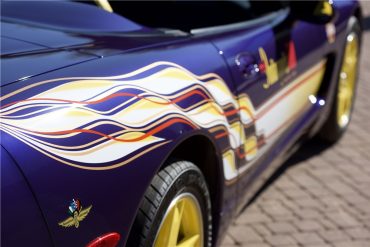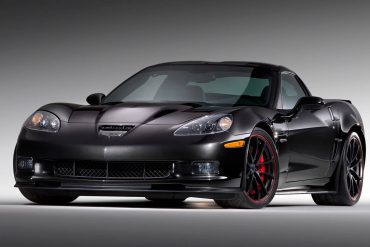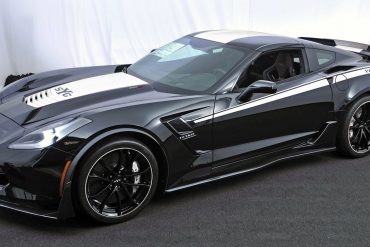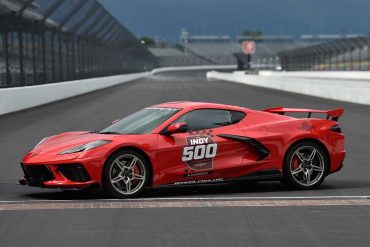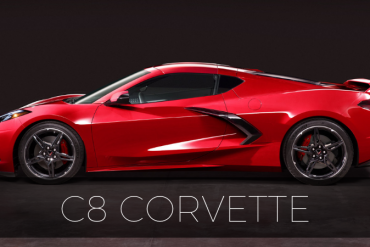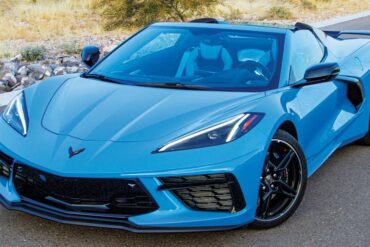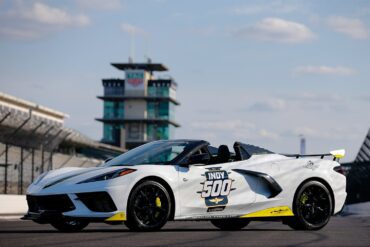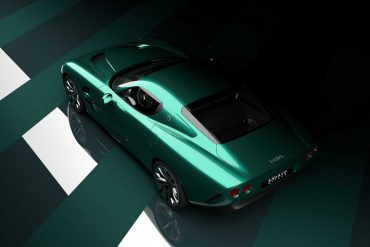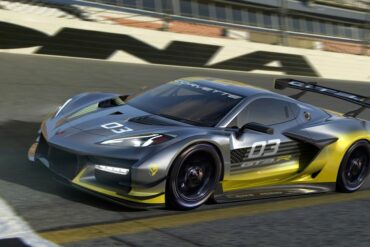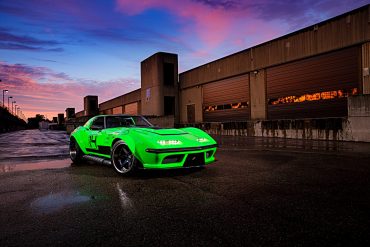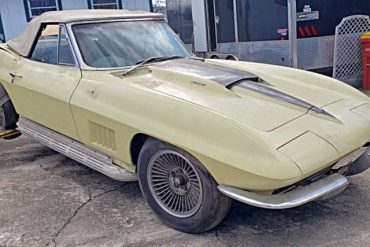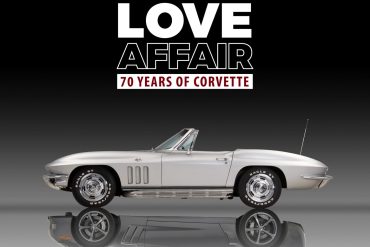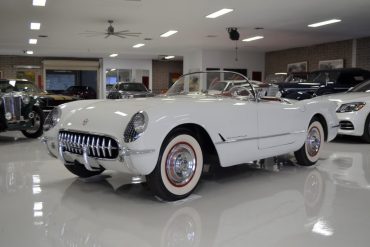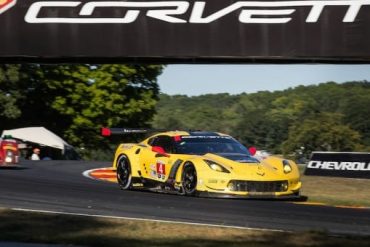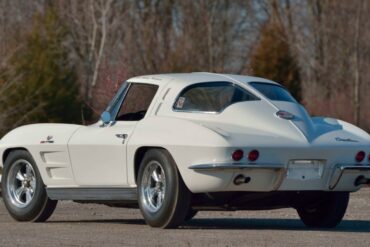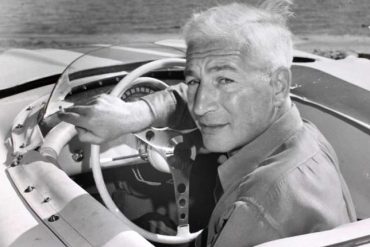The 1963 Split Window Is Voted – BY YOU – as the Greatest Second-Generation Corvette of All Time! We asked...
Original 1964-65 World Fair Mark IV Cutaway Engine to Sell At Auction In January, 2019! Ask just about any automotive...
In 1969, Chevrolet changed the perception of Corvette forever by introducing the ultra-powerful ZL-1 Corvette with a 427 CI engine producing 585 horsepower! The 1969 ZL-1 Corvette came equipped with an entirely new big-block engine option that produced more horsepower than any Corvette that had come before it. Any Corvette, when ordered with RPO ZL1, came fitted with an all-aluminum 427 C.I. engine that featured a dry-sump oil system and which weight approximately 100 pounds less.
Did you know that the earliest ZR1 Corvettes came into existence long before any of these later iterations? If not, then take a few minutes to acquaint yourself with one the rarest small-block production Corvettes of all time - the 1970-1972 Corvette ZR1. From 1970 to 1972, Chevrolet offered the ZR1 Special Engine Package, which featured a small-block LT1 engine.
1978 was significant because it marked the cars 25th anniversary of production. Recognizing the achievement of manufacturing a car for a quarter-century, Chevrolet commemorated this accomplishment by introducing two special-edition Corvette that year. The first of these was known as the "Silver Anniversary" edition Corvette. It featured a two-tone silver over gray exterior with special pin-striping and special "25th Anniversary" badging.
What you see before you is a 1982 Chevrolet Corvette that has been fitted with a rare Greenwood Daytona body kit. The most extreme of the Greenwood brothers' kits, the Daytona body kit is a highly sought-after modification that was developed by race-winning specialists Burt and John Greenwood.
While not exactly a "collector's edition" Corvette in its own right, it nonetheless has become a uniquely identifiable and collectible Corvette from the fourth-generation era. 1988 marked the 35th anniversary for Corvette, and so it was decided that Chevrolet should commemorate the milestone by introducing an anniversary-edition model. This anniversary car was the first of its kind in a decade, given that Chevrolet opted not to manufacture a Corvette in 1983.
For the fourth generation Corvette, legendary Corvette racer John Greenwood developed the G4R. It was essentially a radical bodykit that usually followed a high level of performance upgrades. Included was a ground effects package that had integrated lights on the front valance. Furthermore the a new engine scoop and rear wing were fitted.
The Corvette team decided to one-up the Viper with four extra cylinders, they decided on one of Ryan Falconer’s stunning, all aluminum, 600-cubic-inch, 683hp, 680 lb-ft V-12 racing engines. The biggest challenge was the fact that the all-aluminum V-12 engine was 8.8-inches longer than the production Corvette engine. So the front end of the ZR-1 would have to be stretched 8 inches. This test car was named Conan, after his raw, beastlike charisma.
The actual Corvette Pace Car that served at the 79th running of the Indianapolis 500 was a near-stock LT1 Corvette Convertible, except for the mandatory safety features that were required by the Indianapolis Motor Speedway. The Official Pace Car cam equipped with strobe lights, a special roll-bar, five-point safety harnesses for the driver and passenger and an on-board fire suppression system. Chevrolet built just three of the actual pace cars.
Callaway has built a firm reputation for producing some of the most sophisticated and advanced Corvette-based automobiles. Introduced in 1998, Callaway’s C12 continued this proud legacy. Designed, developed and constructed by two top German engineering and development companies, Callaway and IVM, the C12 was intended as a bespoke, high-performance car that offered its occupants a civilized interior and relaxed ride. One of the most respected Corvette super-cars ever.
While it was not the rarest Corvette Pace Car Replica ever manufactured by GM, the 1998 Chevrolet Corvette Pace Car Replica was – and remains – one of the most desirable pace car replicas ever made. This is primarily due to the fact that this replica is nearly identical to the actual pace cars that were used during the 1998 Indianapolis 500. It was fitting given that 1998 also marked the brand's 20th anniversary as "Official Pace Car" of this momentous race.
The Centennial Edition came finished exclusively in a Carbon Flash Metallic finish with satin-black graphics. Special badging graphics signifying Chevrolet’s racing history, including an image of Louis Chevrolet on the B-pillars, were added as accents to the cars finish. The wheels were also finished in satin black. All models also received red brake calipers. The exterior color scheme of the Centennial Edition Corvette is reinforced inside the car.
The Specialty Engineering Group (SVE) has partnered with Chevy to create the 2019 Yenko/SC Corvette Stage II. This new Corvette, which is the creation of Specialty Vehicles Engineering in cooperation with Chevrolet, delivers an incredible 1000 horsepower and 875 lb-ft of torque. Better yet, it's an option that you can order from your local Chevy dealership.
The 2020 Mid-Engine Corvette Will Lead the Indianapolis 500 This Weekend! During a year when motorsports – and especially auto...
C8 Corvette Stingray – “One Man’s Vision Finally Becomes Reality” Long before the formal introduction and unveiling of the C8...
Production of the 2021 Mid-Engine Corvette Stingray was cut short by General Motors. Production of the 2021 MY (model years) was paused in May and June, 2021, due in large part to an ongoing shortage of semiconductor chips. The Coupe proved the more popular bodystyle.
THE 2021 MID-ENGINE CORVETTE STINGRAY CONVERTIBLE WILL LEAD THE FIELD OF THE 105TH INDIANAPOLIS 500, PRESENTED BY GAINBRIDGE The Corvette...
The Zagato company took a C7 Corvette Z06 and transformed it into the IsoRivolta GTZ, a "spiritual descendant" of the Iso Grifo A3/C (Corsa). The original A3/C race car was developed by Giotto Bizzarrini not long after he left Ferrari, where he had served as cheif engineer behind the 250 GTO, which is revered as the world's most expensive car. Bizzarrini purportedly fancied the A3/C as his "own personal evolution of (and improvement upon) the GTO design."
As a way of celebrating Corvette Racing's monumental performance during the 2020 IMSA racing season, Chevrolet created two special-edition C8.R Corvette packages to commemorate the event. Available in either the No. 3's Design Accelerate Yellow or the No. 4's Design Hypersonic Gray, each car features special badging and trim. Other changes were minimal for 2022.
2023 Corvette Production Begins May 16th, Z06 Production to Follow Later This Summer (source: Motor1.com) If you’ve been clamoring to...
Blurring the Lines Between the Road and the Racetrack – the 2024 Corvette Z06 GT3.R When GM announced they’d be...
The Chevrolet Corvette is a timeless American icon, one that’s captured hearts and imaginations for decades. The sports car is...
This 1967 Corvette Has a Story That’s Almost As Cool As the Car Itself! If you’re a car aficionado than...
While it is not commonly known, the origins of “CORVSPORT.COM” date back to about 2010 when two (somewhat younger) automotive...
For the past seventy years, the Corvette has been celebrated time and again as “America’s Sports Car” by enthusiasts across...
Here’s Something You Won’t Likely Ever See Again – A Like New 1953 Corvette – and Its For Sale! How...
CORVETTE RACING AT ROAD AMERICA Milner, Gavin place second in GTLM; Garcia, Magnussen finish third in tight championship ELKHART LAKE,...
AUCTION: A 1963 Chevrolet Corvette Z06/N03 Owned by Mickey Thompson! An incredibly rare piece of Mickey Thompson’s personal fleet can...
Zora Arkus Duntov – In His Own Words Recently, while performing research on the mid-engine Corvette, I stumbled upon a...


